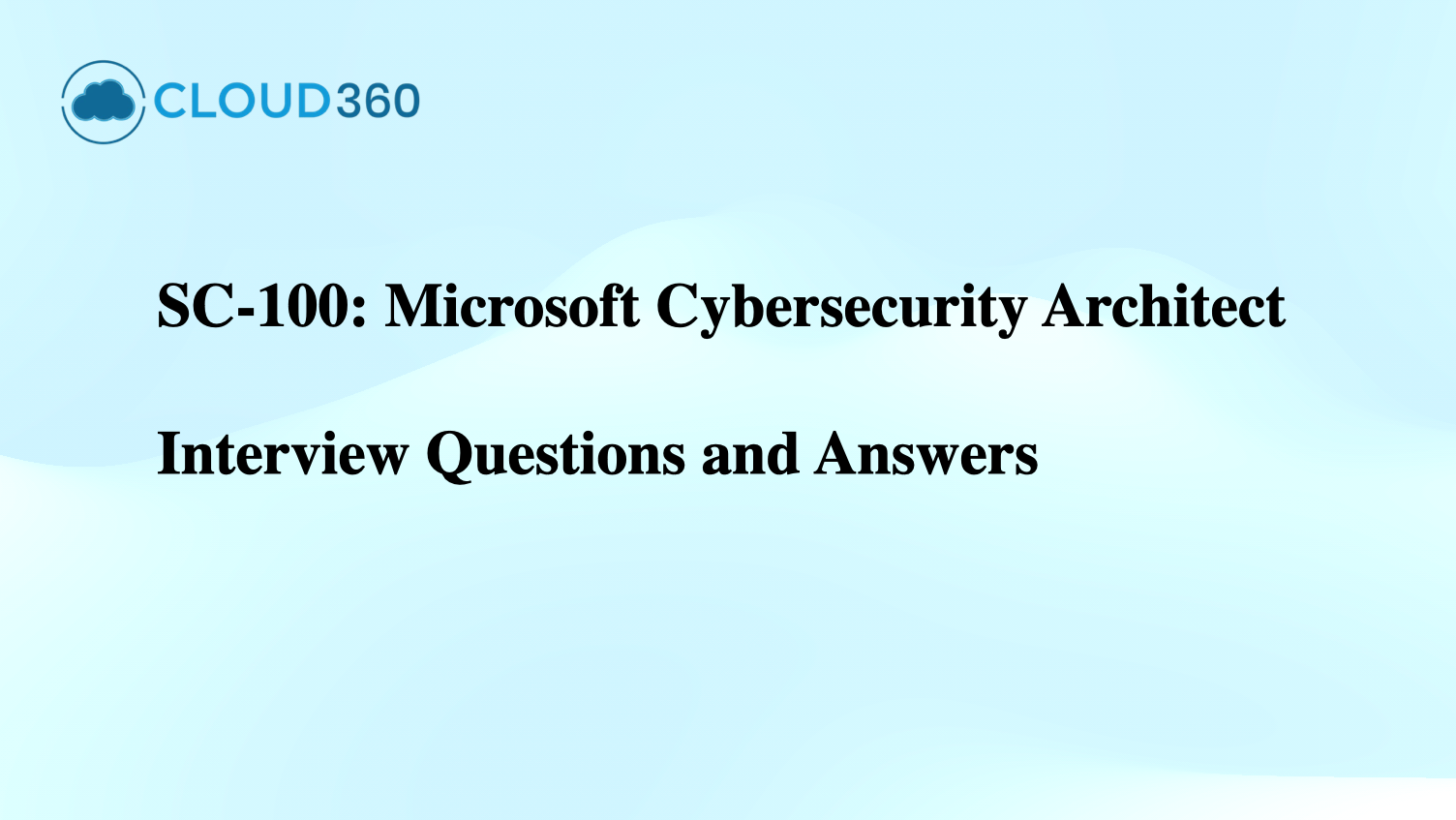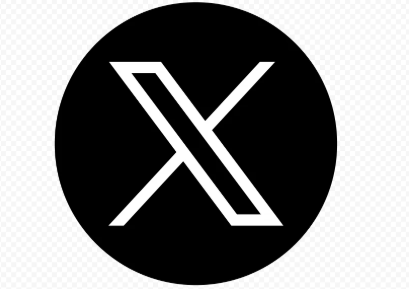Image Credit: Cloud360 Training
Are you preparing for the SC-100: Microsoft Cybersecurity Architect Expert certification or an interview for a senior cybersecurity role? You’re in the right place. This blog compiles the top 50 SC-100 interview questions with correct answers and explanations, aligned with the exam’s focus areas and real-world architectural scenarios.
What is the SC-100 Exam?
The SC-100 certification validates your expertise in designing and evolving cybersecurity strategies using Microsoft technologies. It’s a capstone expert-level exam that assumes experience across identity, device, data, app, and infrastructure security.
Domains Covered
Top 50 SC-100 Interview Questions with Answers
1. What is the role of a Microsoft Cybersecurity Architect?
Answer: To design and evolve comprehensive security strategies that align with business needs using Microsoft security solutions.
2. What are the core pillars of Zero Trust architecture?
Answer: Verify explicitly, use least privilege access, and assume breach.
3. What tools are used to implement Zero Trust in Microsoft environments?
Answer: Azure AD, Conditional Access, Defender for Endpoint, Microsoft Entra, Microsoft Purview, and Microsoft Sentinel.
4. How would you assess an organization’s current security posture?
Answer: Use Microsoft Secure Score, Defender for Cloud recommendations, and Microsoft Compliance Manager.
5. How does Microsoft Secure Score help cybersecurity architects?
Answer: It provides a measurable security posture score with actionable recommendations.
6. How do you prioritize security initiatives in a large organization?
Answer: Based on business risk, threat likelihood, and compliance requirements.
7. What is Conditional Access and where does it fit in a Zero Trust model?
Answer: It enforces policies based on identity signals and conditions—central to Zero Trust.
8. How would you design identity protection in a hybrid environment?
Answer: Use Azure AD Identity Protection, MFA, PIM, and integration with on-premises Active Directory.
9. What is Microsoft Defender XDR?
Answer: A unified threat protection suite covering endpoint, identity, email, and cloud apps.
10. What’s the difference between Microsoft Sentinel and Defender XDR?
Answer: Sentinel is a SIEM/SOAR solution for correlating and responding to events across the organization, while Defender XDR provides protection and detection at the workload level.
11. What is Microsoft Entra?
Answer: A suite that includes Azure AD, Entra Permissions Management, and Entra Verified ID for identity governance.
12. How do you design a secure access strategy for third-party contractors?
Answer: Use B2B collaboration, Conditional Access, and Just-in-Time access through PIM.
13. What is a workload identity?
Answer: An identity used by applications or services to access other services securely.
14. What role does Microsoft Defender for Cloud play in architecture?
Answer: It provides CSPM (Cloud Security Posture Management) and CWPP (Cloud Workload Protection Platform) capabilities.
15. What’s the best way to segment networks in Azure?
Answer: Use virtual networks, subnets, NSGs, ASGs, and Azure Firewall.
16. How would you protect data at rest in Azure?
Answer: Use storage encryption, disk encryption, and customer-managed keys with Azure Key Vault.
17. How would you detect threats in Microsoft 365 workloads?
Answer: Use Microsoft Defender for Office 365 and Microsoft Sentinel connectors.
18. What’s the importance of role-based access control (RBAC) in Azure?
Answer: RBAC enforces the principle of least privilege by assigning permissions based on roles and scope.
19. How can you enforce compliance across subscriptions?
Answer: Use Azure Policy, Management Groups, and Blueprints.
20. What’s the function of Microsoft Compliance Manager?
Answer: It helps manage compliance requirements with assessments and improvement actions.
Advanced / Scenario-Based Questions
21. How would you secure a multi-cloud environment with Microsoft tools?
Answer: Integrate AWS and GCP into Defender for Cloud and Sentinel; use Entra Permissions Management.
22. What would your approach be to respond to a ransomware incident?
Answer: Isolate affected systems, analyze with Defender XDR, contain with Sentinel playbooks, and conduct root cause analysis.
23. How do you prevent lateral movement after an identity compromise?
Answer: Use MFA, Conditional Access, Defender for Identity, and microsegmentation.
24. How would you monitor insider threats?
Answer: Use Microsoft Purview Insider Risk Management, Sentinel, and auditing.
25. What’s a secure way to manage secrets in cloud-native apps?
Answer: Store them in Azure Key Vault and restrict access via managed identities.
26. How do you manage Bring Your Own Device (BYOD) security?
Answer: Enforce Conditional Access, compliance policies with Intune, and MAM without enrollment.
27. What’s the benefit of using Defender for IoT?
Answer: It provides deep visibility into unmanaged IoT/OT devices and detects threats.
28. How would you architect security for a DevOps pipeline?
Answer: Integrate Defender for DevOps, secret scanning, access controls, and vulnerability management.
29. How do you perform risk analysis for new business initiatives?
Answer: Evaluate threat models, compliance implications, and use Microsoft Threat Modeling Tool.
30. What’s your approach to data classification and labeling?
Answer: Use Microsoft Purview Information Protection and auto-labeling policies.
Security Architecture and Governance
31. What is a security baseline?
Answer: A predefined configuration standard aligned with organizational or regulatory policies.
32. How do you enforce encryption across Azure resources?
Answer: Use policies that audit or deny unencrypted services.
33. What is Zero Trust for apps?
Answer: Ensuring only verified apps can access corporate resources using Defender for Cloud Apps.
34. How do you secure legacy systems in cloud migration?
Answer: Isolate, monitor via Defender for Endpoint, and apply compensating controls.
35. What is continuous access evaluation (CAE)?
Answer: Real-time policy enforcement in Azure AD for access decisions.
36. How do you use log analytics in security architecture?
Answer: Ingest logs to Sentinel for correlation, detection, and automation.
37. What’s your approach to handling third-party SaaS security?
Answer: Monitor via Defender for Cloud Apps and integrate with SSO and Conditional Access.
38. What is Identity Governance in Microsoft Entra?
Answer: It ensures users have appropriate access with access reviews, entitlement management, and lifecycle workflows.
39. How do you use threat intelligence in architecture?
Answer: Integrate with Microsoft Sentinel, Defender XDR, and third-party feeds.
40. What’s the importance of architecture reviews?
Answer: Regular reviews help align with new threats, business changes, and compliance updates.
Interview-Ready Final 10
41. How do you balance user experience with security?
Answer: Apply risk-based policies, SSO, and adaptive access controls.
42. What’s your approach to hybrid cloud security strategy?
Answer: Use centralized tools like Defender for Cloud, unified logging, and hybrid identity.
43. How would you respond to a compliance audit request?
Answer: Use Compliance Manager reports and Microsoft Purview records.
44. How do you design for resilience in a security solution?
Answer: Redundancy, failover, DR, and defense-in-depth.
45. What tools help you track and report incidents?
Answer: Microsoft Sentinel, Microsoft Purview, Defender XDR.
46. How do you ensure DevSecOps in your architecture?
Answer: Integrate security scanning tools, access controls, and compliance checks in pipelines.
47. How do you protect privileged identities?
Answer: Use PIM, Conditional Access, auditing, and break-glass accounts.
48. What KPIs would you track for security architecture?
Answer: Secure Score, incident response time, policy compliance, MFA usage.
49. How do you approach business-aligned security design?
Answer: Collaborate with stakeholders, align controls with risk appetite and regulatory needs.
50. What makes a good cybersecurity architecture?
Answer: It’s layered, adaptive, resilient, aligned with business needs, and based on Zero Trust principles.
The SC-100 exam and related interviews demand deep architectural thinking, practical understanding of Microsoft tools, and a strong Zero Trust mindset. This set of 50 SC-100 interview questions with answers provides a holistic foundation for real-world security architecture and certification success.


